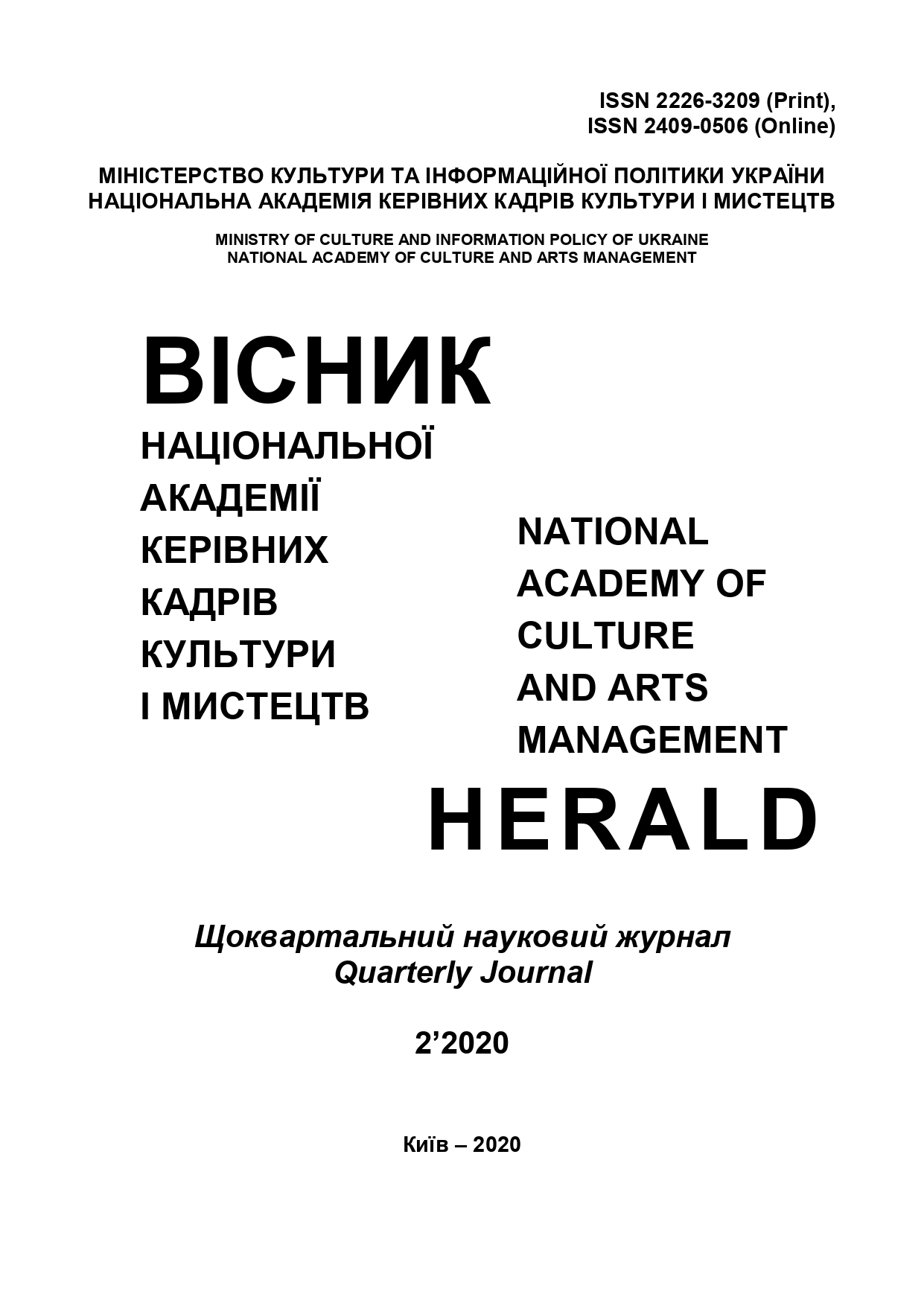Хореографічна лексика у французьких музично-сценічних постановках XVII – XVIII століть
Choreographic language in French musical and stage productions XVII – XVIII centuries
Author(s): Katerina MaksymenkoSubject(s): Theatre, Dance, Performing Arts, Music, 17th Century, 18th Century
Published by: Національна академія керівних кадрів культури і мистецтв
Keywords: choreographic vocabulary; choreography; dance art; French etiquette of the XVII - XVIII centuries; minuet;
Summary/Abstract: Purpose of the article. The article is devoted to issues of choreographic vocabulary in French musical and stage productions of the XVII - XVIII centuries, which will allow us to broaden knowledge about the historical dance of this period and to outline new directions in its study. The methodology of the research is to apply methods of formal and comparative analysis, hermeneutic method, which allowed to analyze the purpose and functions of dance art at the court in France in an era of absolutism; characterize the specifics of the dance language in the aspect of its semantic content. The scientific novelty of the work is to deepen the notions of choreographic elements and their interaction in the dances of French musical and stage productions of the XVII - XVIII centuries, which broadens opportunities for their perception and understanding; the role of dance in the social and political life of the contemporary society, which allows us to outline new angles in the study of ballet history, historical dance in colleges, universities, etc. The materials offered in the article are of interest to specialists in such fields as the philosophy of culture, the history of choreography, etc. Conclusions. The content of choreographic elements and their interaction in the dances of French musical and stage productions of the 17th - 18th centuries is largely uncertain. In part, it can be understood by studying such aspects as facial expressions, gestures, as well as features of world perception and rules of court etiquette of the period under study. Some explanations can be found in the works of the XVII - XVIII centuries, which are devoted to the phenomenon of dance. Some of them present numerous numerical and rather complicated conditional symbols of dance movements, hand movements, body, descriptions of external attributes of dance that had a significant effect on the design of the artistic whole, however, did not deny freedom in their interpretation.
Journal: Вісник Національної академії керівних кадрів культури і мистецтв
- Issue Year: 2020
- Issue No: 2
- Page Range: 157-161
- Page Count: 5
- Language: Ukrainian

